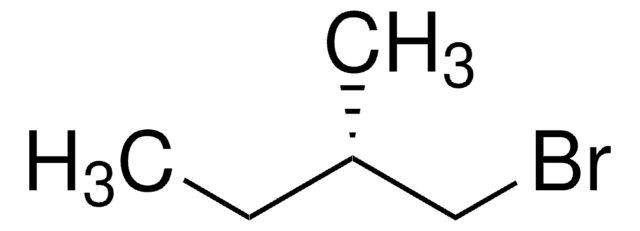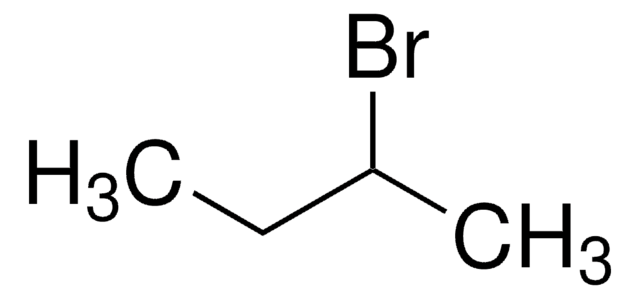124095
1-Bromo-3-methylbutane
96%
Sinonimo/i:
Isoamyl bromide, Isopentyl bromide
About This Item
Prodotti consigliati
Saggio
96%
Forma fisica
liquid
Indice di rifrazione
n20/D 1.4409 (lit.)
P. eboll.
120-121 °C (lit.)
Punto di fusione
−112 °C (lit.)
Solubilità
H2O: slightly soluble at 16.5 °C (0.02g/100ml)
alcohol: miscible
diethyl ether: miscible
Densità
1.261 g/mL at 25 °C (lit.)
Gruppo funzionale
alkyl halide
Temperatura di conservazione
2-8°C
Stringa SMILE
CC(C)CCBr
InChI
1S/C5H11Br/c1-5(2)3-4-6/h5H,3-4H2,1-2H3
YXZFFTJAHVMMLF-UHFFFAOYSA-N
Cerchi prodotti simili? Visita Guida al confronto tra prodotti
Descrizione generale
Applicazioni
Avvertenze
Danger
Indicazioni di pericolo
Consigli di prudenza
Classi di pericolo
Aquatic Chronic 2 - Eye Irrit. 2 - Flam. Liq. 2 - Skin Irrit. 2 - STOT SE 3
Organi bersaglio
Respiratory system
Codice della classe di stoccaggio
3 - Flammable liquids
Classe di pericolosità dell'acqua (WGK)
WGK 3
Punto d’infiammabilità (°F)
71.6 °F - closed cup
Punto d’infiammabilità (°C)
22 °C - closed cup
Dispositivi di protezione individuale
Eyeshields, Faceshields, Gloves, type ABEK (EN14387) respirator filter
Scegli una delle versioni più recenti:
Possiedi già questo prodotto?
I documenti relativi ai prodotti acquistati recentemente sono disponibili nell’Archivio dei documenti.
I clienti hanno visto anche
Il team dei nostri ricercatori vanta grande esperienza in tutte le aree della ricerca quali Life Science, scienza dei materiali, sintesi chimica, cromatografia, discipline analitiche, ecc..
Contatta l'Assistenza Tecnica.











